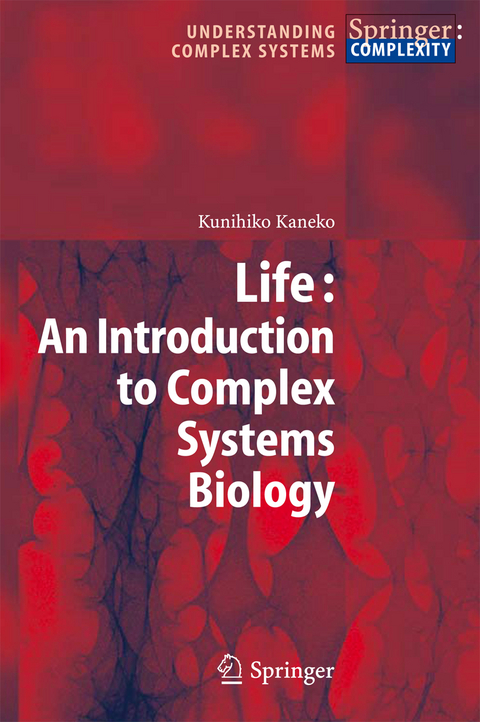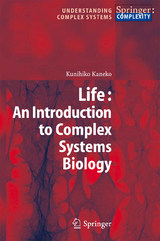Life: An Introduction to Complex Systems Biology
Seiten
2006
Springer Berlin (Verlag)
978-3-540-32666-3 (ISBN)
Springer Berlin (Verlag)
978-3-540-32666-3 (ISBN)
This title is included in the Springer Complexity programme.
What is life? What type of system is life? How can we understand life? Or what does "understanding life" really mean? Sixty years since the publication of What Is Life? by Schrodinger ¨ and after the rise and success of molecular biology, have we reached the answer to these questions? In the recent years, I have often been asked by young researchers and students in biology: "I am afraid that such basic questions on a life system itself are not answered by the main-stream approach of c- rent biology that elucidates molecules and genes. We need some alternative approach. WhatamItodo?"Theyaresatis?edneitherwiththecurrenttrend in bioinformatics nor with the detailed computer models, and are striving for a framework complementary to molecular biology, a one that does not rely on enumerative approach. Responding to these voices, I have explained approaches my colleagues and I have been taking both theoretically and experimentally, in lectures and seminars. Although they show much interest, introduction of these rather interdisciplinary style of research is not easy, let alone discussing how we can understand life. Of course they ask for some books that describe a theoretical basis of our approach and the summaries of the recent studies. My desire to answer these requests from the students and researchers was the main force that had driven me to write the present book. On the other hand, those working in nonlinear dynamics and theoretical physicshavestrivedtosetupanoveltheoreticalframeworkthatiscompatible with biological systems.
What is life? What type of system is life? How can we understand life? Or what does "understanding life" really mean? Sixty years since the publication of What Is Life? by Schrodinger ¨ and after the rise and success of molecular biology, have we reached the answer to these questions? In the recent years, I have often been asked by young researchers and students in biology: "I am afraid that such basic questions on a life system itself are not answered by the main-stream approach of c- rent biology that elucidates molecules and genes. We need some alternative approach. WhatamItodo?"Theyaresatis?edneitherwiththecurrenttrend in bioinformatics nor with the detailed computer models, and are striving for a framework complementary to molecular biology, a one that does not rely on enumerative approach. Responding to these voices, I have explained approaches my colleagues and I have been taking both theoretically and experimentally, in lectures and seminars. Although they show much interest, introduction of these rather interdisciplinary style of research is not easy, let alone discussing how we can understand life. Of course they ask for some books that describe a theoretical basis of our approach and the summaries of the recent studies. My desire to answer these requests from the students and researchers was the main force that had driven me to write the present book. On the other hand, those working in nonlinear dynamics and theoretical physicshavestrivedtosetupanoveltheoreticalframeworkthatiscompatible with biological systems.
How Should Living Systems Be Studied?.- Constructive Biology.- Basic Concepts in Dynamical Systems and Statistical Physics for Biological System.- Origin of Bioinformation.- Origin of a Cell with Recursive Growth.- Universal Statistics of a Cell with Recursive Growth.- Cell Differentiation and Development.- Irreversible Differentiation from Stem Cell and Robust Development.- Pattern Formation and Origin of Positional Information.- Genetic Evolution with Phenotypic Fluctuations.- Speciation as a Fixation of Phenotypic Differentiation.- Conclusion.
| Erscheint lt. Verlag | 3.8.2006 |
|---|---|
| Reihe/Serie | Understanding Complex Systems |
| Zusatzinfo | XIV, 374 p. |
| Verlagsort | Berlin |
| Sprache | englisch |
| Maße | 155 x 235 mm |
| Gewicht | 713 g |
| Themenwelt | Naturwissenschaften ► Biologie ► Biochemie |
| Naturwissenschaften ► Physik / Astronomie ► Angewandte Physik | |
| Schlagworte | Bioinformation • complex systems biology • constructive biology • Dynamical Systems • Evolution • Leben (biolog.) • Leben (Biologie) • Living systems • tissue |
| ISBN-10 | 3-540-32666-9 / 3540326669 |
| ISBN-13 | 978-3-540-32666-3 / 9783540326663 |
| Zustand | Neuware |
| Informationen gemäß Produktsicherheitsverordnung (GPSR) | |
| Haben Sie eine Frage zum Produkt? |
Mehr entdecken
aus dem Bereich
aus dem Bereich
Die Biochemie und industrielle Nutzung von Naturstoffen
Buch | Softcover (2024)
Springer Spektrum (Verlag)
49,99 €




